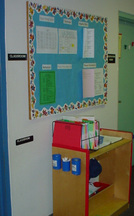- Home
-
Learn
- History of VI >
- Legislation & Laws >
- Vision Professionals >
-
VI Program Resources
>
- Program Printables
- Itinerant Teaching Tips
- Year at a Glance
- VI Program Handbook
- Caseload Analysis
- Organization & Time Management
- Professional Development
- Teacher Standards
- Professional Ethics
- Awards & Recognition
- APH Scholar Program
- Professional Organizations
- Certification Organizations
- Dealing with Challenges
- Professional Publications >
- Relatable Books for All Ages >
- Family Resources >
- Plan
- Basics
-
Teach
- Teaching Strategies >
-
Compensatory Skills Instruction
>
-
Social Skills
>
-
Self Determination
>
- Body Image & Acceptance
- Making Personal Goals
- My Vision Presentation
- My Self-Description
- Create a Personal Data Sheet
- Disclosure Decision
- Disability Statement
- Requesting Help
- Fighting Fears
- My Circle of Support
- Personal Responsibility
- Advocate for Safe Enviroments
- Having Picture Taken
- Coping with Change
- Aging Eyes
- Physical Characteristics
- Political Activism
- Laws Regarding Persons with Disabilities
-
Sensory Efficiency
>
-
Independent Living
>
- Orientation & Mobility Instruction >
- Recreation & Leisure >
-
Career & Vocation
>
-
Grow
- Complete Set Bonus >
-
Recorded Presentations
>
- Webinar: Tips for Being a "Physically Fit" TVI
- Webinar: The Art of Teaching the ECC
- Webinar: Virtual & F2F Strategies
- Webinar: Foundations of Teaching the ECC in the Age of Virtual Instruction
- Webinar: Itinerant Teaching Strategies
- Webinar: Using Themes to Teach the ECC
- Webinar: Conducting a FVLMA
- Webinar: Selecting the Right AT
- Webinar: Developing SMARTER Goals
- Webinar: Determining Service Intensity Using the VISSIT
- Webinar: Activities to Teach the ECC
- Webinar: Accessible Content for BLVI
- Webinar: Accommodations for VI
- Webinar: MIMO Strategies & Activities
- Webinar: SIDPID Strategies & Activities
- Webinar: Standard Course of Study Strategies & Activities
- Webinar: Job Tasks for Job, Career & Life
- Shop
- Jobs
Daily ScheduleBy: Carmen Willings
teachingvisuallyimpaired.com Putting together an appropriate program for all students begins with creating a consistent and predictable daily schedule. Creating a consistent schedule will help the students anticipate what is going to happen next. By developing patterns for regular activities, the students will anticipate events and thereby be less startled by them. A consistent schedule will help prevent inappropriate behaviors by helping the student anticipate the change. The schedule will help the student to recognize, understand and apply vocabulary knowledge of object, picture, symbol, and words. A consistent schedule will help teach the structure of space and the sequence of time. For students who require sensory input, you will also need to embed opportunities for students to have their sensory needs met in order to prepare them for the next task. There are additional considerations that are unique to students with visual impairments that can help them access all areas of the routine schedule along with incorporating concepts that will benefit all students in your program.
Prior to Student's Arrival
Until you become familiar with the morning checklist, if your mornings can be chaotic, or if you have any distractions in the morning, it is VERY helpful to have a morning checklist. This is also helpful for substitutes! Prior to the student's arrival:
Planning the ScheduleWhen creating the schedule, it is important to create a balance between teacher-directed and child-initiated activities. It is also beneficial to alternate large group, small group, and independent activities.
Morning TransitionMake
a point to greet the students and tell them any expectations outside
of their normal routine. If the student needs assistance getting from
the bus or carpool lane, ensure the student's safety, yet encourage
them to travel as independently as possible following the guidance and
direction of the Orientation and Mobility Specialist. The goal should
be to provide fading support in order for the student to learn
independent travel skills.
Once in the room (or other designated area), encourage the student’s to hang up their coats in their own cubicles, hooks or lockers. Morning arrival can be a hectic time of the day, but it can also be a great time to naturally work on many skill areas. Encourage students to discriminate their own name on cubicles or their locker number from that of others. Promote independence by encouraging the students to practice disengaging fasteners to remove coats and locate hood or loop to hang on hook within their locker or cubicle. Have the students unzip their own backpacks and remove communication folders, etc and either have them deliver them to you or place them in a designated file with their name. Signing In
Once the students have removed their coats and unpacked their backpacks, have the students sign in on a sign in board or attendance chart. Depending on student’s ability, the student could match their name to the name on the chart; copy the letters in their name by printing or using letter tiles or magnets; or signing their name. Students can practice matching letters to form their name (or developing a signature) as well as practice independence in activities of daily living and early work skills. This is a natural time to practice signatures which is important for future responsibility and independence. For students with low vision, have the student’s name in bold print. You may want to use another association such as a texture, color, or shape. For students that are blind or functionally blind and not yet reading braille, use a texture and shape paired with their name in braille.
Student TransfersHelp students relate transitions to the time of day and how long the activity will be. Identify time on a clock and/or set a timer to denote time. Talk to the student before touching or lifting/moving him/her to transition. This will help the student anticipate change. Before you touch a student with a visual impairment, make sure he is aware of your presence. Try not to surprise the student by poking or sudden loud talking. This may frighten or startle him/her. For students that are not mobile, provide the student with warnings prior to transfers. Address the student by name, letting them know that they are to be “part of the action.” Even though words may not be understood, the sounds and your tone establish a relationship.
Afternoon DeparturePrior to departure, encourage the students to pack their own backpacks including placing any communication in their folders. Expect the students to put their coats or jackets on with as much independence as possible. This is another natural opportunity to work on engaging zippers, snapping snaps, buttoning buttons, placing arms in sleeves and putting hats and mittens on. When the students leave, have the students sign out by moving their name back to “out”.
|
History of vi
Visual Impairments
Vi organizations & Agencies
VI book resources
VI Professionals
Professionalism
Instructional Planning
Professional Publications
Educational Programming
Individual Learning Differences
referrals
Medical vision exams
fvlma
additional evaluations
service planning
writing goals
compensatory skills
Guiding Principles Functional Skills Community Based Experiences Concepts to Teach Access to Instruction Organization & Study Skills Time Management Virtual Instruction Movies & Assemblies Lectures & Instruction Board Work (Chalk, White, etc.) Daily Schedule Morning Meeting Weather Check Dramatic Play Blocks Numbers & Counting Cranmer Abacus Instruction Algebra Geometry & Spatial Sense Measurement & Data Early Literacy Experiences Create Tactual Books Reading Instruction Reading Efficiency Science Adaptations Social Studies Adaptations Communication Modes Accessible Educational Materials Individual Schedules & Communication Cards Adjust Lighting Large Print Optical Devices for Near Optical Devices for Distance Optical Device Use Photocopying Font Legibility Increase Contrast Pictures & Worksheets Keyboarding Instruction Word Processing and Shortcuts Navigate Computer w/o a Mouse Braille Code Braille Instruction Braille Instruction Materials Writing Braille Summer Reading (braille) Signature & Handwriting Nemeth Braille Code Tactile Graphics Guidelines Creating Tactile Graphics Tactile Graphics Instruction Teacher Made Materials Labeling System assistive technology
Overview of Assistive Technology VI AT Resources Non-Optical Low Vision Devices Video Magnifiers Video Magnifier Instruction Screen Enlargement & Readers Low/Med. Tech Tactual Devices Notetaker Instruction Braillewriter Repair Tactile Graphics Technology Braille Technology Auditory Access Devices Accessing Audio Books iPads as Instructional Tools Making iOS Device Accessible iOS Accessibility Resources VoiceOver Apps for VI Note Taking apps Apps for Accessing Books Identification Apps Navigation & Location Apps Braille Apps Magnifier Apps Sound Making Apps Cause & Effect Apps Vision Skills Apps Apps for Early Learning Read to Me Story Apps Apps for Communication Android Apps for VI sensory efficiency
Sensory Input Encourage Use of Vision Sensory Area & Rooms Lightbox Use Sensory Activities for Students with Multiple Disabilities Sensory Tables Visual Efficiency Skills Visual Attend and Scan Activities Visual Tracking Activities Visual Discrimination Activities Visual Motor Activities Tactual Readiness Developing Skillful Hands Auditory Readiness Listening Skill Instruction independent living
orientation & Mobility
career education
recreation & Leisure
self determination
|
|
Teaching Students with Visual Impairments LLC
All Rights Reserved |
- Home
-
Learn
- History of VI >
- Legislation & Laws >
- Vision Professionals >
-
VI Program Resources
>
- Program Printables
- Itinerant Teaching Tips
- Year at a Glance
- VI Program Handbook
- Caseload Analysis
- Organization & Time Management
- Professional Development
- Teacher Standards
- Professional Ethics
- Awards & Recognition
- APH Scholar Program
- Professional Organizations
- Certification Organizations
- Dealing with Challenges
- Professional Publications >
- Relatable Books for All Ages >
- Family Resources >
- Plan
- Basics
-
Teach
- Teaching Strategies >
-
Compensatory Skills Instruction
>
-
Social Skills
>
-
Self Determination
>
- Body Image & Acceptance
- Making Personal Goals
- My Vision Presentation
- My Self-Description
- Create a Personal Data Sheet
- Disclosure Decision
- Disability Statement
- Requesting Help
- Fighting Fears
- My Circle of Support
- Personal Responsibility
- Advocate for Safe Enviroments
- Having Picture Taken
- Coping with Change
- Aging Eyes
- Physical Characteristics
- Political Activism
- Laws Regarding Persons with Disabilities
-
Sensory Efficiency
>
-
Independent Living
>
- Orientation & Mobility Instruction >
- Recreation & Leisure >
-
Career & Vocation
>
-
Grow
- Complete Set Bonus >
-
Recorded Presentations
>
- Webinar: Tips for Being a "Physically Fit" TVI
- Webinar: The Art of Teaching the ECC
- Webinar: Virtual & F2F Strategies
- Webinar: Foundations of Teaching the ECC in the Age of Virtual Instruction
- Webinar: Itinerant Teaching Strategies
- Webinar: Using Themes to Teach the ECC
- Webinar: Conducting a FVLMA
- Webinar: Selecting the Right AT
- Webinar: Developing SMARTER Goals
- Webinar: Determining Service Intensity Using the VISSIT
- Webinar: Activities to Teach the ECC
- Webinar: Accessible Content for BLVI
- Webinar: Accommodations for VI
- Webinar: MIMO Strategies & Activities
- Webinar: SIDPID Strategies & Activities
- Webinar: Standard Course of Study Strategies & Activities
- Webinar: Job Tasks for Job, Career & Life
- Shop
- Jobs

